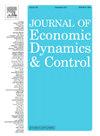Cap and trade versus tradable performance standard in a production network model with sectoral heterogeneity
IF 2.3
3区 经济学
Q2 ECONOMICS
引用次数: 0
Abstract
In this paper, we compare the economic and welfare implications of two carbon pricing policies, namely the European Cap and Trade (CaT) regime and the Chinese Tradeable Performance Standard (TPS). The former sets an economy-wide emissions target and forces firms to purchase sufficient certificates. The latter sets an emissions intensity and requires firms with a higher intensity to either abate or buy emissions allowances from firms with lower-than-target intensities. It can be shown that TPS is equivalent to CaT when carbon pricing revenues are redistributed to firms according to output. In a dynamic two-agent general equilibrium model with heterogenous production sectors, we show that TPS outperforms a CaT regime that redistributes carbon revenues to households in a lump-sum manner, both, in terms of output gains and welfare due to lower costs on the production side. However, CaT with labor tax reduction increases welfare most because it alleviates distortions on the production side and improves the income situation of all households.
具有部门异质性的生产网络模型中的限额与交易与可交易绩效标准
在本文中,我们比较了两种碳定价政策的经济和福利影响,即欧洲的限额与交易(CaT)制度和中国的可交易绩效标准(TPS)。前者设定了整个经济体的排放目标,并强制企业购买足够的证书。后者设定了一个排放强度,并要求强度较高的企业要么减少排放,要么从低于目标强度的企业那里购买排放配额。结果表明,当碳定价收入按产量再分配给企业时,TPS相当于CaT。在具有异质生产部门的动态双主体一般均衡模型中,我们发现TPS在产出收益和福利方面都优于CaT制度,后者以一次性方式将碳收入重新分配给家庭,这是由于生产侧成本较低。然而,降低劳动税的CaT增加福利最多,因为它缓解了生产端的扭曲,改善了所有家庭的收入状况。
本文章由计算机程序翻译,如有差异,请以英文原文为准。
求助全文
约1分钟内获得全文
求助全文
来源期刊

Journal of Economic Dynamics & Control
ECONOMICS-
CiteScore
3.10
自引率
10.50%
发文量
199
期刊介绍:
The journal provides an outlet for publication of research concerning all theoretical and empirical aspects of economic dynamics and control as well as the development and use of computational methods in economics and finance. Contributions regarding computational methods may include, but are not restricted to, artificial intelligence, databases, decision support systems, genetic algorithms, modelling languages, neural networks, numerical algorithms for optimization, control and equilibria, parallel computing and qualitative reasoning.
 求助内容:
求助内容: 应助结果提醒方式:
应助结果提醒方式:


